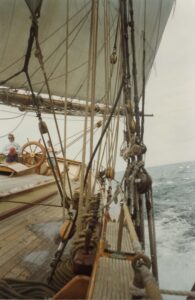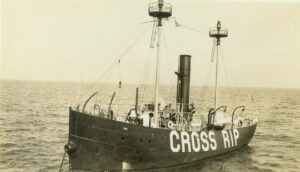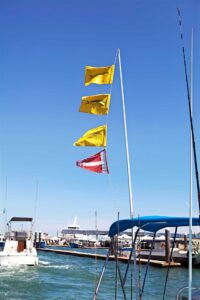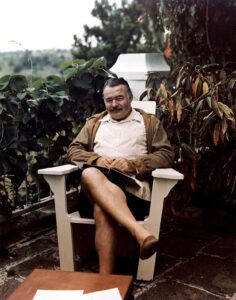Today’s the day!” was internationally known treasure hunter Mel Fisher’s daily mantra. Every morning for 16 years, as his family and crew came aboard to begin the day’s dive to discover a sunken Spanish galleon, Mel set the tone by affirming that this was the day they would be successful in their search. Mid-day on July 20, 1985, after a decade and a half, an estimated cost of $58 million and the devastating loss of family members, the Fishers did indeed find the remains of the Nuestra Senora de Atocha on the ocean floor, 35 miles southwest of Key West. Even Jimmy Buffett was part of the celebration of the amazing discovery the story goes that he sang atop the silver bars stacked aboard the salvage boat while the Fisher crew downed well-earned champagne.
The Atocha was one of hundreds of ships in the system the Spanish empire adopted from 1566 to 1790 to transport items from agricultural and building materials to precious metals, spices, sugar, tobacco and silks from their colonies in the Americas to Spain. Ships were loaded with goods from ports in Mexico, Peru, Colombia, Brazil and Venezuela, then sailed together as a fleet from Cuba across the Atlantic to Spain. The Spanish government worked hard to protect these riches, and although warships and forts were effective against pirates, they were no use against hurricanes.
The Atocha was part of a flotilla that left Havana in September 1622, six weeks later than originally planned. The fleet was overtaken by a hurricane as it entered the Florida straits. Overnight, eight vessels lay scattered on the ocean floor, with their cargo and crew from the Marquesas Keys to the Dry Tortugas.
For 60 years the Spanish government undertook salvage operations, using a large brass diving bell with a glass window. A slave would ride to the bottom, recover whatever possible, and then be hauled up by the men on deck. Salvage ship captains counted dead slaves as a business expense since this method was somewhat adequate for recovery but often lethal to the diver.
Since then, hundreds of gold-seekers have spent their lives and money searching for the remaining buried riches that the Spanish never recovered. Most of them have used legendary shipwreck diver John Potter’s 1960 book The Treasure Diver’s Guide, which details the locations of many shipwrecks.
Progresses in technology have altered the search for and identification of historic shipwrecks. Diving gear evolved from the deathly diving bell to dry suit-hard hat outfits, open-bottom helmets, scuba gear and now autonomous underwater vehicles. Equipment advancements such as GPS, specially designed proton magnetometers and inventions by the divers themselves — such as Mel Fisher’s “mailbox” — have improved efficiency. A mailbox is a tube that is lowered from the stern of a securely anchored vessel. When the engines are put in gear, a layer of clear water is sent down from the surface, displacing sediment and exposing heavier artifacts.
In the early 1970s, when Mel Fisher’s Treasure Salvors crew began focusing on the lost Spanish fleet, Mel’s mailbox was instrumental in exposing silver bars and cannons proven to be from the Atocha. In 1980, a fortune in gold ingots, jewelry and silver coins was discovered from another ship in the fleet, the Margarita. Five years later, the Treasure Salvors found the Atocha’s motherlode. Realizing the magnitude of their discovery, the Fisher family, along with archeologists and preservationists from around the country, spent years cleaning and cataloging to prevent the loss of significant historical artifacts and the abundant riches. Today, the not-for-profit Mel Fisher
Maritime Heritage Society Museum collection is anchored by treasures from the Atocha and Margarita. Items include a gold chalice designed to prevent its user from being poisoned, a solid gold belt and necklace set with gems, a gold chain that weighs more than seven pounds and an impressive 77.76 carat uncut hexagonal emerald that experts have traced to the Muzo mine in Colombia.
Prior to focusing on this fleet, the Fishers had been searching with some success for the remains of a 1715 fleet — 11 of the 12 ships were lost due to hurricane winds on their return to Spain, and were strewn about the area near present day Vero Beach.
Referred to as the 1715 Plate Fleet due to its silver cargo, the fleet has, from the 1940s until today, been the mission of many underwater explorers. Kip Wagner and the Real Eight Company, Inc. crew were instrumental in the rediscovery and recovery of the fleet’s location and some of its bounty. Wagner entered into a salvage agreement with Mel Fisher, who worked the site until he and his family moved their focus to the fleet that included the Atocha.
Eventually, the Fisher family sold the exclusive 1715 Plate Fleet salvage rights to Brent W. Brisben and his father William O. Brisben, who in 2010 founded 1715 Fleet-Queens Jewels, LLC (QJ), the largest permitted historic shipwreck salvage operation in Florida waters.
Just 17 days after the purchase, Eric Schmitt, a subcontractor to 1715-QJ, recovered 51 gold escudos and 40 silver reales hidden inside a bronze swivel cannon. Schmitt struck again in June 2015, finding $1 million-worth of gold artifacts, including a 40-foot gold chain and an extremely rare coin minted for the King of Spain that is estimated to be worth $500,000.
And on July 28, 2015, on the three century anniversary of the sinking of the 1715 Plate Fleet, Brisben and crew located $4.5 million worth of rare coins in shallow waters off Vero Beach. Nine of the coins, called royals, were made for the King of Spain and are valued at $300,000 apiece. According to Brisben, Spanish convoy manifests state that the 1715 vessels carried the equivalent of about $400 million in today’s money. To date, about $180 million of that treasure has been recovered.
Although technology has made homing in on buried shipwrecks more efficient, legal battles over ownership have made it increasingly difficult. The Fishers originally acquired the ownership rights to the Atocha wreck in the 1980s during a Supreme Court battle that ruled “finders keepers.” During that legal struggle, the Spanish government never asserted an interest in the lost treasure and now has no claim on it. The state of Florida did assert a claim and is entitled to 20 percent of all findings. The remaining discoveries are split between Brisben’s company and whoever finds the treasure.
Years of hardship, intricate legalities and wealth sharing are no match for the hypnotic allure of gold that lies untouched, awaiting discovery. From beach combers with metal detectors to multinational corporations, the common denominator is an addiction to gold.
In an interview following the latest find, Brent Brisben said that before he got into the salvage business, he thought that magic was only in fairy tales. But since the 2015 discovery, he said, “I truly now believe that there is an energy that pervades these shipwrecks that I can’t quantify. I believe that these shipwrecks want their stories to continue.”
MUSEUMS & EXHIBITS
- History of Diving Museum – Islamorada Fla. This museum features one of the world’s largest international collections of diving helmets and artifacts.
- Key West Shipwreck Museum – Key West, Fla. Enter the world of 1856 Key West — the era of the wreckers. The museum combines actors, films, laser technology and artifacts from the recently rediscovered vessel Isaac Allerton, sunk in 1856 on the treacherous Florida Keys reef.
- Lake Champlain Maritime Museum – Vergennes, Vt. From 1996 to 2006, the museum’s dive team searched the watery depths that are part of the 120-mile boundary between New York and Vermont. They discovered more than 300 shipwrecks, from 18th-century gunboats to steamboats and canal schooners.
- Mel Fisher Maritime Museum – Key West, Fla. Explore the only accredited maritime museum in the Keys and a nationally recognized research and archeology institute. Exhibits include artifacts and coins recovered from the 1622 Fleet.
- Mel Fisher’s Treasures – Sebastian, Fla. Dive into history with this spectacular collection of cultural artifacts and treasure recovered from the ocean depths — visitors can even lift an authentic Atocha gold bar!
- Whydah Pirate Museum – Provincetown, Mass. The Whydah, captained by pirate Sam Bellamy, wrecked in 1717 and took its bounty from 50 plundered ships with it. See and touch silver pirate coins, Akan gold jewelry, rare navigation instruments and pirate weapons from three centuries ago.





